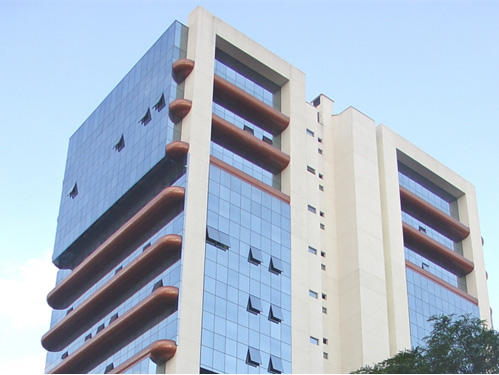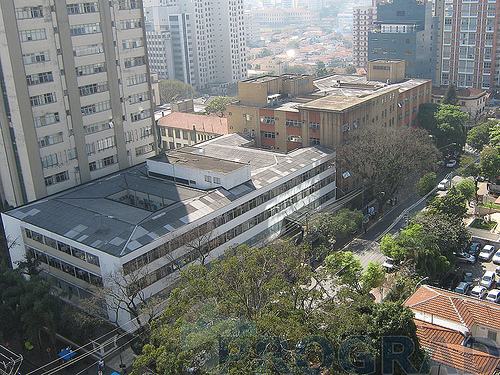Within the last ten years Brazil has attracted a lot of international attention due, in part,
to its economic growth (it is the "B" in the famous BRICS acronym) and as the host of the next
football World Cup (2014) and Olympic Games (2016). And as its economic center, Sao Paulo has
been at the epicenter of Brazil's uprise. Actually, Sao Paulo is the name of a state, as
well as a city. The city of Sao Paulo is the capital of the state and is the largest city of
the country (and of South America) and the state of Sao Paulo is the home of four of the most
important Brazilian universities: USP, UNICAMP, UFSCAR and UNIFESP. Both USP and UNIFESP have a
campus in the capital.

|
The new research building at the Sao Paulo campus, which hosts
the
Laboratory of Evolutionary Genomics and Biocomplexity. |
The Laboratory of Evolutionary Genomics and Biocomplexity of the Medical School of UNIFESP,
located at the newest research building of the university's "Sao Paulo Campus", was created
in 2010 by Prof Dr Marcelo R.S. Briones (biology), Prof Dr Paulo B. Paiva (bioinformatics)
and Prof Dr Francisco A. R. Bosco (physics), aiming to establish interdisciplinary research
involving biology (genomics, evolution and bioinformatics), mathematics (dynamical systems)
and physics (statistical physics). I joined the group in 2013, after the passing of
Prof. Francisco Bosco, in December 2012.
We have two research lines that are connected with dynamical systems: dynamics of regulatory
gene networks and the evolution and adaptation of viral populations. In the project about gene
networks we apply ideas from the theory of coupled cell systems to "real networks" related to
transcription and translation of genetic information in unicellular organisms, which have
been experimentally mapped out by several groups around the world - the pieces of information
collected by these groups are deposited in web sites where they are integrated to form the so
called "gene regulatory network". In the project about viral populations we employ theoretical
models, as well as computer simulations to study the dynamics of viral population inside a host
organism. The main theoretical underpinning of viral evolution is the "theory viral quasi-species",
which is based on the Eigen-Schuster quasi-species model. There are simple stochastic versions
of the basic viral quasi-species model which may be treated analytically.

|
View from the top of the research building of the Sao Paulo campus.
The university's hospital (Hospital Sao Paulo-HSP) on the bottom-left
and the Medical School (EPM) main building on top-right. |
The research funding in Brazil is mainly from public agencies. There are two federal agencies
CNPq (projects and scholarships) and CAPES (scholarships) and some states have their own
research funding agencies. In the state of Sao Paulo we have FAPESP, which is the strongest
public research funding agency of the country (since the economy of the state of Sao Paulo
is the most prosperous and robust of the country). This extra source of funding gives us an
important advantage. Furthermore, there is a recent movement to foment the internationalization
of our research, by sending Brazilian students abroad and bringing scholars and post-docs to
Brazil. FAPESP has been putting forward international agreements with several funding agencies
around the world.
For those looking for a place to do a post-doc or a long term visit to Sao Paulo, here are some helpful links:
International Agreements can be found at: here.
Information on how to apply for a FAPESP post-doc scholarship are here.
Open post-doc positions at Sao Paulo state are advertised here.
Fernando Antoneli